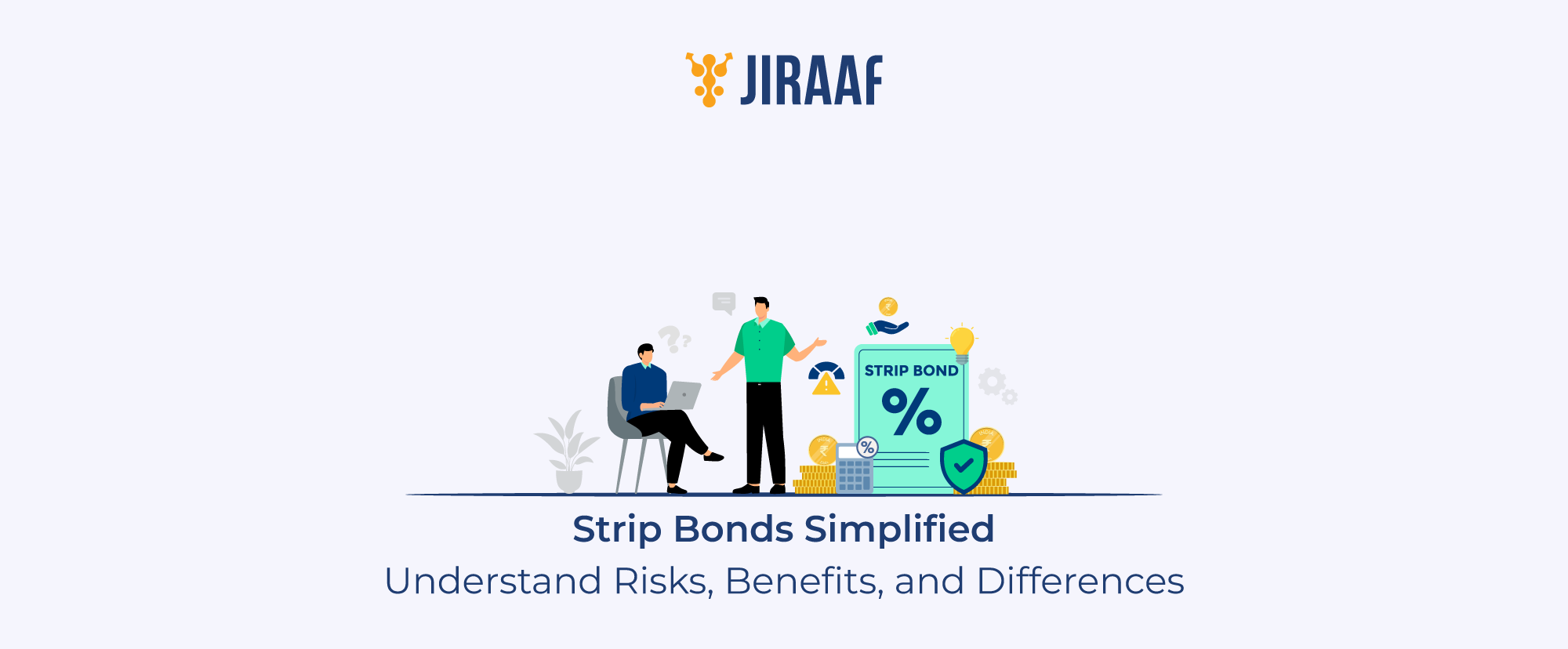In the ever-evolving financial landscape, diversification has become an essential strategy for safeguarding and growing wealth. While equities and real estate can offer high returns, they often come with higher risks. This is where bonds, the fixed income investments that provide more stability, play an integral role in balancing portfolios. By adding bonds to your investment mix, you can create a robust, diversified portfolio that aligns with your financial goals while navigating market fluctuations. But how do you choose the right bonds to meet your needs? Let us explore different types of bonds, investment strategies, and factors to consider when selecting bonds that fit your financial objectives.
To make the most out of bond investing, it’s essential to match bond types with your specific objectives. You should consider factors like bond duration, yield, and issuer creditworthiness, as well as strategies for mitigating interest rate risks, such as bond laddering. Here’s a roadmap for choosing bonds to meet different financial goals and effectively managing them in changing market environments.
Defining Your Investment Needs: Short-, Medium-, and Long-Term Goals
When considering bonds, it’s essential to align your choices with your financial goals based on the time horizon. Here are some examples of short-, medium-, and long-term goals with suitable bond types for each:
- Short-Term Goals (1-3 years): If you’re investing for short-term goals, like building an emergency fund or saving for a vacation, you may prioritize liquidity and stability over returns. For this purpose, Treasury bills (T-bills) and short-duration corporate bonds are excellent options, as they offer lower risks and quick access to funds.
- Medium-Term Goals (3-10 years): For goals like saving for a child’s education or a down payment on a house, a moderate approach to risk and return is ideal. Investment grade corporate bonds and medium-duration government bonds can be good choices, as they provide higher yields than short-term options without a long-term lock-in period.
- Long-Term Goals (10+ years): For goals like retirement or creating a legacy fund, long-term bonds can offer growth through interest compounding. Long-duration government bonds, AAA rated corporate bonds, or zero-coupon bonds that appreciate over time are suited for this horizon, as they provide more significant returns if held to maturity, despite their higher sensitivity to interest rate changes.
Aligning your bond investments with these time horizons ensures that your bond choices support your specific financial objectives effectively, providing security, growth, and income when you need them most.
Key Bond Investment Concepts to Understand
Selecting the right bond investments requires knowledge of a few critical concepts that influence bond behavior and investment strategy:
- Bond Duration: Duration measures a bond’s sensitivity to interest rate changes. A bond with a longer duration will experience larger price fluctuations in response to rate changes, whereas short-duration bonds are less affected by interest rate shifts. For a conservative portfolio, shorter-duration bonds can help limit exposure to interest rate volatility. Long-duration bonds, on the other hand, may be more suitable for those focused on capital appreciation.
- Bond Laddering to Mitigate Interest Rate Risk: A bond laddering strategy involves purchasing multiple bonds with different maturity dates. This structure provides a steady cash flow, reduces the impact of interest rate changes on your portfolio, and allows for reinvestment at potentially higher rates as bonds mature. Laddering is particularly advantageous in a rising rate environment, as it gives investors flexibility to reinvest at higher yields over time.
- Long-term Goal Planning: For individuals with long-term financial goals, such as retirement, children’s education, or a large future purchase, bonds offer stable, predictable returns. Long-term bonds, like those from government or AAA rated corporations, can be ideal for such goals. They provide peace of mind and are less affected by short term market fluctuations, aligning well with investors seeking reliable growth for future needs.
Understanding Bond Credit Ratings and What They Mean
One important tool that can help you choose the right bond is the credit rating assigned to the bond. A credit rating is an educated opinion about the financial health of the bond issuer, providing crucial indicators of a bond’s risk profile. It is a conclusion of the likelihood that the issuer will be able to repay its debts. Ratings agencies, such as Credit Rating Information Services of India Limited (CRISIL), Investment Information and Credit Rating Agency of India (ICRA) Ltd, Credit Analysis and Research (CARE) Ltd, Brickwork Ratings India Private Ltd, India Ratings and Research Pvt. Ltd, Acuite Ratings & Research Ltd, and INFOMERICS Valuation and Rating Private Ltd, assess the creditworthiness of bond issuers and assign ratings that reflect the likelihood of repayment. Here’s how to read and interpret these ratings:
- AAA to BBB (Investment Grade): Bonds rated from AAA to BBB are considered safer investments, with AAA rated bonds being the most secure. These bonds, though typically offering lower yields, come with a lower risk of default, making them ideal for conservative investors or those prioritizing capital preservation.
- BB to C (Junk Bonds/ High Yield): Bonds rated below BBB are categorized as high yield or “junk” bonds. They carry a higher risk of default but provide higher yields, making them attractive to income seeking investors willing to accept higher risk.
- D (Default): A D rating indicates that the bond issuer has defaulted on payments. These bonds are high risk and usually not recommended unless part of a high risk investment strategy.
Reviewing credit ratings can help you assess the credit risk associated with each bond and determine if the potential yield aligns with your risk tolerance. By choosing bonds with higher ratings, you reduce the likelihood of default, though at the expense of lower yields.
Managing Bond Risks through Diversification
Every bond investment carries some degree of risk, and understanding these risks is essential for effective bond management. Here are some common bond investment risks and strategies for managing them:
- Interest Rate Risk: As interest rates rise, bond prices typically fall, affecting the value of bonds you may wish to sell. To manage this risk, you can diversify across bonds with different maturities or use bond laddering. Holding bonds to maturity also mitigates interest rate risk, as you receive the full principal back regardless of market fluctuations.
- Credit Risk: This is the risk that a bond issuer may default on payments. Higher rated bonds are less likely to default, so consider investment grade bonds if minimizing credit risk is a priority. Additionally, diversifying across different issuers and sectors can reduce the impact of a default on your overall portfolio.
- Inflation Risk: Inflation erodes purchasing power, meaning that the fixed income from bonds may lose real value over time. To counter inflation risk, consider higher yield bonds, which provide returns that better compensate for inflation effects.
- Market Risk: Economic downturns or unfavorable conditions can lead to bond price declines, even for stable issuers. By holding a mix of asset classes, such as equities, bonds, and bank deposits, you can spread this risk, as each asset class reacts differently to market changes.
Building a Balanced Bond Portfolio: Government vs. Corporate Bonds
Having a blend of government and corporate bonds is crucial for most investors. Government bonds offer security and stability, especially during volatile times, as they are backed by the government. They are ideal for risk averse investors seeking steady returns. Corporate bonds, on the other hand, come in varying levels of risk and return. High quality, investment grade corporate bonds from established companies offer decent returns with moderate risk, while high yield corporate bonds provide higher income potential but with increased credit risk.
The combination of these two bond types can provide a balanced portfolio that offers both stability and higher returns. As a general rule, consider including a mix that aligns with your risk tolerance: a higher portion of government bonds for conservative portfolios and more corporate bonds if you’re open to taking on additional risk.
Integrating Bonds with Other Asset Classes
Bonds are most effective when used in combination with other asset classes, such as equities and bank deposits. Each asset class serves a different purpose:
- Bank Deposits: Provide liquidity and short-term safety, ideal for emergencies or short-term needs.
- Equities: Offer potential for high returns but come with greater risk, suited for long-term growth.
- Bonds: Act as a stabilizing force, delivering fixed income higher than bank deposits and reducing overall portfolio risk.
Combining these three asset classes allows for a diversified portfolio that can withstand market cycles. Bonds help mitigate the volatility of equities, while bank deposits provide quick access to funds without selling off long-term investments.
Choosing the Right Bond Platform:
To simplify your bond investing journey, consider using a reliable online bond platform. Investing in bonds through a reputed online platform can offer you with convenient access to a wide variety of bonds, including government, corporate, and high-yield bonds, making it easier to diversify. Additionally, it allows investors to tailor their bond choices to specific financial goals.
Aspects to Consider When Choosing an Online Bond Platform:
- Regulatory Compliance: Ensure the platform is registered with regulatory authorities, like SEBI in India, which provides a layer of investor protection
. - Bond Variety: Choose platforms offering a range of bonds, across different issuers, credit ratings and maturities
. - Fee Transparency: Look for a clear fee structure to avoid hidden costs that may impact returns
. - Credit Ratings and Risk Warnings: Ensure the platform provides reliable credit ratings and clear disclosures on bond risks, such as interest rate, credit, and market risks
. - User Experience: A user-friendly interface, responsive customer support, and educational resources can greatly enhance the investment experience
. - Security: Prioritize platforms with robust data security measures, including encryption and two-factor authentication
.
Selecting a trustworthy online bond platform that aligns with your needs helps ensure a safe and efficient investment experience.
Conclusion
Choosing the right bonds is a thoughtful process that involves assessing your financial goals, understanding various bond types and durations, and managing risks through diversification. Bonds offer stability, predictable income, and a hedge against market volatility, making them an essential part of a balanced portfolio. By aligning bond choices with your short-, medium-, and long-term goals, you can create an investment strategy that not only meets your needs but also adapts to changing economic conditions.
Incorporating bonds alongside other asset classes, such as equities and bank deposits, can enhance portfolio resilience and ensure steady returns. Whether you’re focused on capital preservation, income maximization, or long-term growth, bonds can help you achieve a secure financial future. Online bond platforms provide an accessible gateway to the bond market, offering carefully curated options that simplify the bond investment journey.
Take the time to explore your options, evaluate bond features, and consult trusted platforms as you build a robust, goal oriented bond portfolio. With the right approach, bonds can be a powerful ally in your path to financial stability and success.
Remember, investing in bonds is a long-term strategy. It’s essential to stay informed, diversify your portfolio, and seek professional advice when needed.
Discover fixed income investments with Jiraaf, a SEBI registered online bonds platform that educates and brings access to a wide array of bonds. Sign up today to explore diversified fixed income investment opportunities to support your goal-based wealth creation journey. Start investing!









